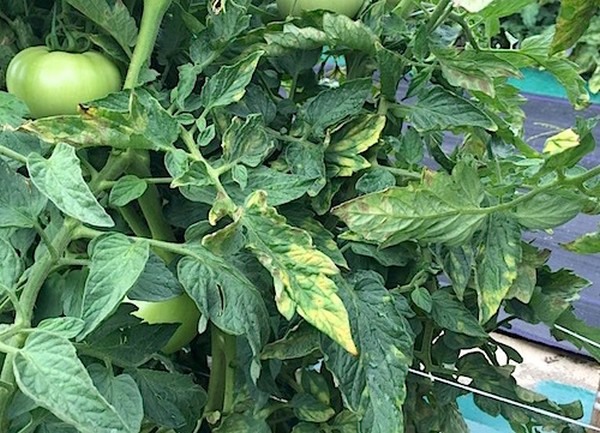Leaf mold occasionally appears in a high tunnel or greenhouse tomato production in New Jersey. However, under ideal conditions, the disease will develop in field-grown crops. The fungus will cause infection under prolonged periods of leaf wetness and when relative humidity remains above 85%. If the relative humidity is below 85%, the disease will not occur. Therefore, the proper venting of high tunnels and greenhouses on a regular basis is important. The pathogen can survive (overwinter) as a saprophyte on crop debris or as sclerotia in the soil. Conidia (spores) of the fungus can also survive up to one year in the soil.
Leaves of infected plants will develop pale-green or yellow spots that are distinct. A dense, olive-green to brown spore mass will develop on the undersides of infected leaves.

Symptoms of leaf mold on infected tomato plant. Note bright yellow leaves and olive-green spores developing on undersides of leaves.
Management of leaf mold begins with recognizing early symptoms, applying preventative fungicides, and removing all infected plant material from the field, greenhouse, or high tunnel, and crop rotation. Protectant fungicides such as chlorothalonil used in weekly protectant spray programs will help control leaf mold. For organic growers, regular copper applications may help to suppress the disease.
For more information on options to control leaf mold in high tunnels and greenhouses, please see Table E-11 in the 2022/2023 Mid-Atlantic Commercial Vegetable Production Recommendations Guide.
Cultivars with resistance to leaf mold have been developed. A nice write-up with more information on leaf mold by Dr. Beth Gugino, a vegetable pathologist at Penn State, can be found at Leaf Mold on Tomato: Host Resistance is a Management Option.
For more information: 
Rutgers University
State University of New Jersey
www.rutgers.edu
